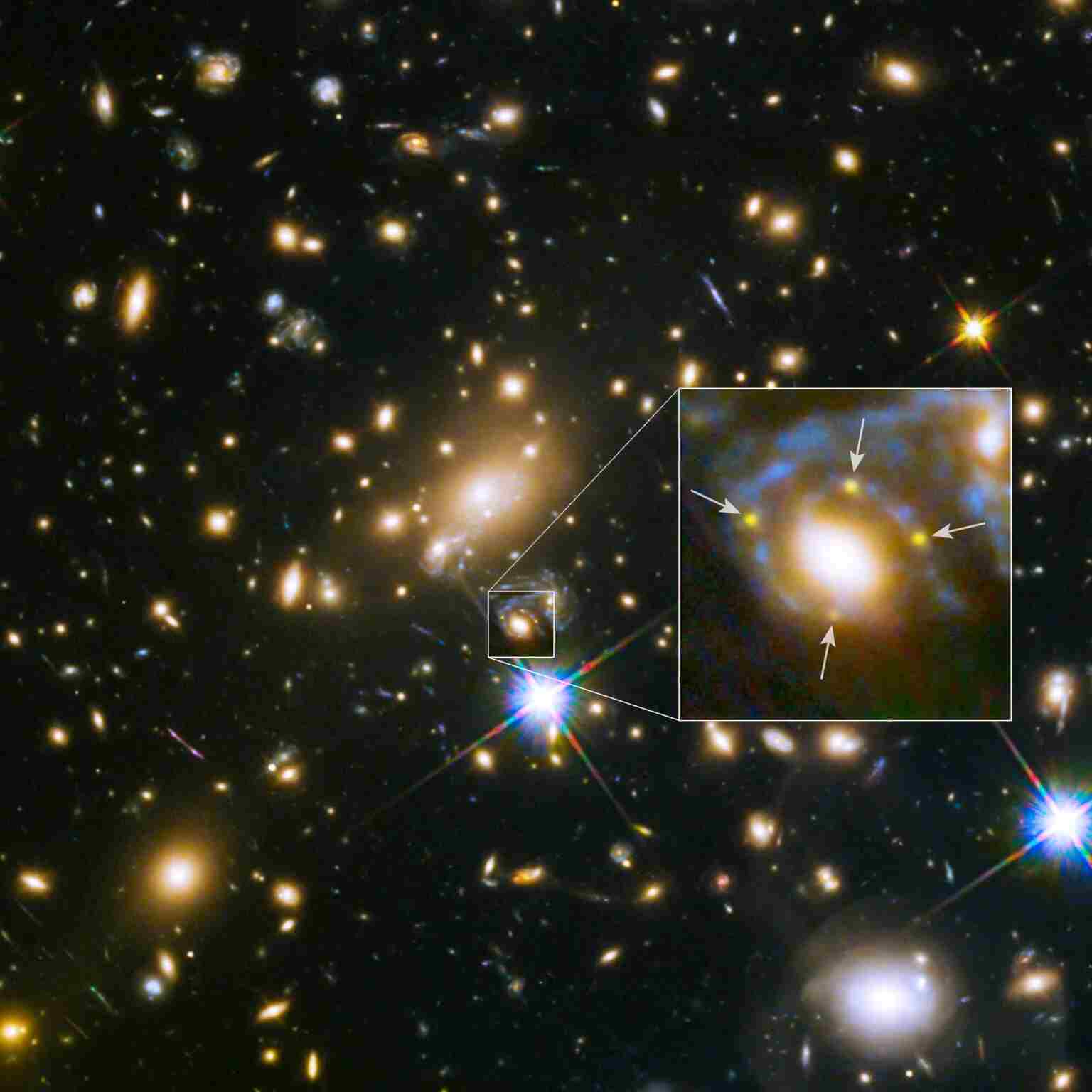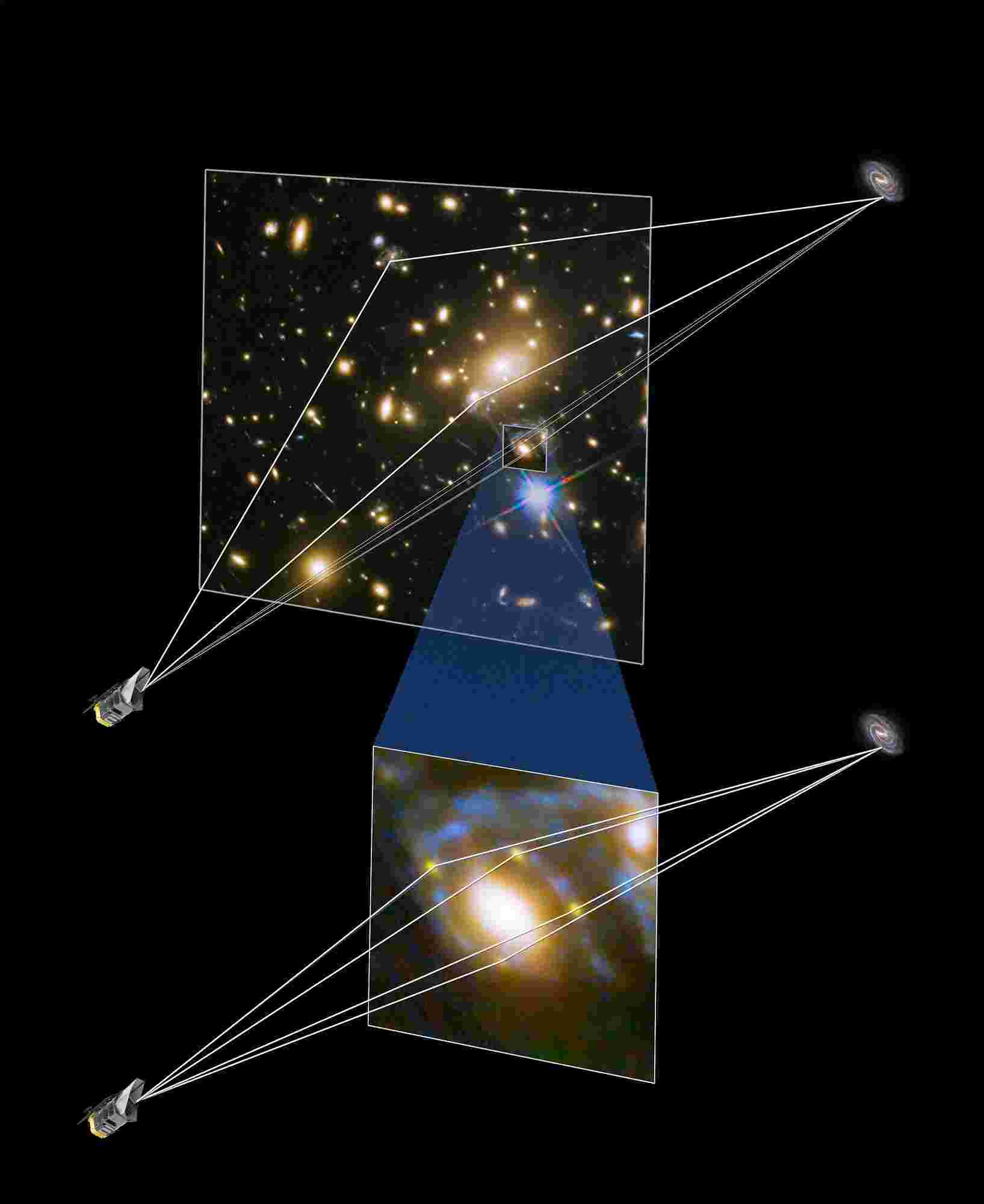BIOLOGY
Unlock the secrets of the Universe with the help of cutting-edge data mining tools designed for use with the Roman Space Telescope

Researchers delving into one of the biggest enigmas of the universe - the speed at which it is expanding - are preparing to tackle this question in a novel manner through NASA's Nancy Grace Roman Space Telescope.
By May 2027, when it launches, astronomers will sift through the vast collection of images from Roman in search of gravitationally lensed supernovae. These observations can then be used to calculate the rate at which the universe is expanding.
Astronomers have various methods to determine the current expansion rate of the universe, which is also known as the Hubble constant. However, these different techniques have resulted in varying values, causing what is referred to as the "Hubble tension."
Roman's main focus will be on studying the enigmatic dark energy and its impact on the expansion of the universe. One of their key techniques for this will involve comparing the inherent brightness of objects such as type Ia supernovae with their observed brightness to calculate their distances. Another approach could be using Roman to analyze gravitationally lensed supernovae, which offers a distinct method for determining the Hubble constant based on geometric methods rather than just brightness comparisons.
According to Lou Strolger from the Space Telescope Science Institute (STScI) in Baltimore, who co-leads the team preparing for Roman's study of gravitationally lensed supernovae, "Roman is the perfect tool to advance our understanding of these objects." These supernovae are not only difficult to find, but also rare. We have had to rely on luck in detecting a few of them early enough. However, with Roman's wide field of view and high-resolution imaging capabilities, these chances will greatly improve."
Using advanced tools such as NASA's Hubble Space Telescope and James Webb Space Telescope, scientists have identified a total of only eight supernovae that are gravitationally lensed in the entire universe. However, out of those eight, only two have been suitable for accurately measuring the Hubble constant due to their specific type and the time it takes for their images to reach us. This phenomenon of light being bent by the strong gravitational forces of galaxies or clusters is known as gravitational lensing. 
As the light from the supernova travels along various paths, it creates multiple images of itself in different locations in the sky. Due to differences in these paths, the images may appear delayed by varying amounts of time - anywhere from hours to months, or even years. By precisely measuring these differences in arrival times, we can determine a combination of distances that helps us understand the Hubble constant.
Using this unique method with the same observatory allows us to gain new insights into why different techniques have produced conflicting results, explained Justin Pierel, co-lead on the program alongside Strolger, both of whom are from STScI.
Roman's thorough surveys will accurately map the universe at a much faster rate than Hubble, as the new telescope can capture over 100 times more area in a single image. Instead of taking multiple pictures of individual trees, this advanced technology allows us to view the entire forest in one snapshot, Pierel explained enthusiastically.
Under the High Latitude Time Domain Survey, astronomers will repeatedly observe the same area of the sky, providing unique opportunities to study objects that change over time. This will result in an immense amount of data – more than 5 billion pixels in each observation – which must be carefully analyzed to identify rare events. Dr. Strolger and Dr. Pierel at STScI are leading a team funded by NASA's ROSES program to develop methods for detecting gravitationally lensed supernovae in data collected by the Nancy Grace Roman Space Telescope.
Pierel explained that the full potential of gravitationally lensed supernovae can only be realized with careful preparation. We must have all the necessary tools in place beforehand so that we do not squander valuable time sifting through large amounts of data.
A group of researchers from different NASA centers and universities across the nation will work together to complete this project. The preparation process will consist of multiple phases. First, the team will develop data reduction systems specifically for identifying gravitationally lensed supernovae in images captured by Roman. To effectively train these systems, the researchers will also generate simulated images as there are currently only 10,000 known lenses available for testing, but they require 50,000.
The data reduction pipelines developed by the team led by Strolger and Pierel will supplement existing pipelines designed to research dark energy using Type Ia supernovae. According to Strolger, Roman presents a unique opportunity to create a high-quality collection of gravitationally lensed supernovae. All our preparations leading up to this point will provide us with the necessary components to fully utilize the immense potential for cosmological studies.
The management of the Nancy Grace Roman Space Telescope falls under the responsibility of NASA's Goddard Space Flight Center in Greenbelt, Maryland. Other key players involved include NASA's Jet Propulsion Laboratory and Caltech/IPAC in Southern California, as well as the Space Telescope Science Institute in Baltimore. A team of scientists from different research institutions also contribute to the project. The primary companies involved in its development are Ball Aerospace and Technologies Corporation based in Boulder, Colorado; L3Harris Technologies located in Melbourne, Florida; and Teledyne Scientific & Imaging headquartered in Thousand Oaks, California.

